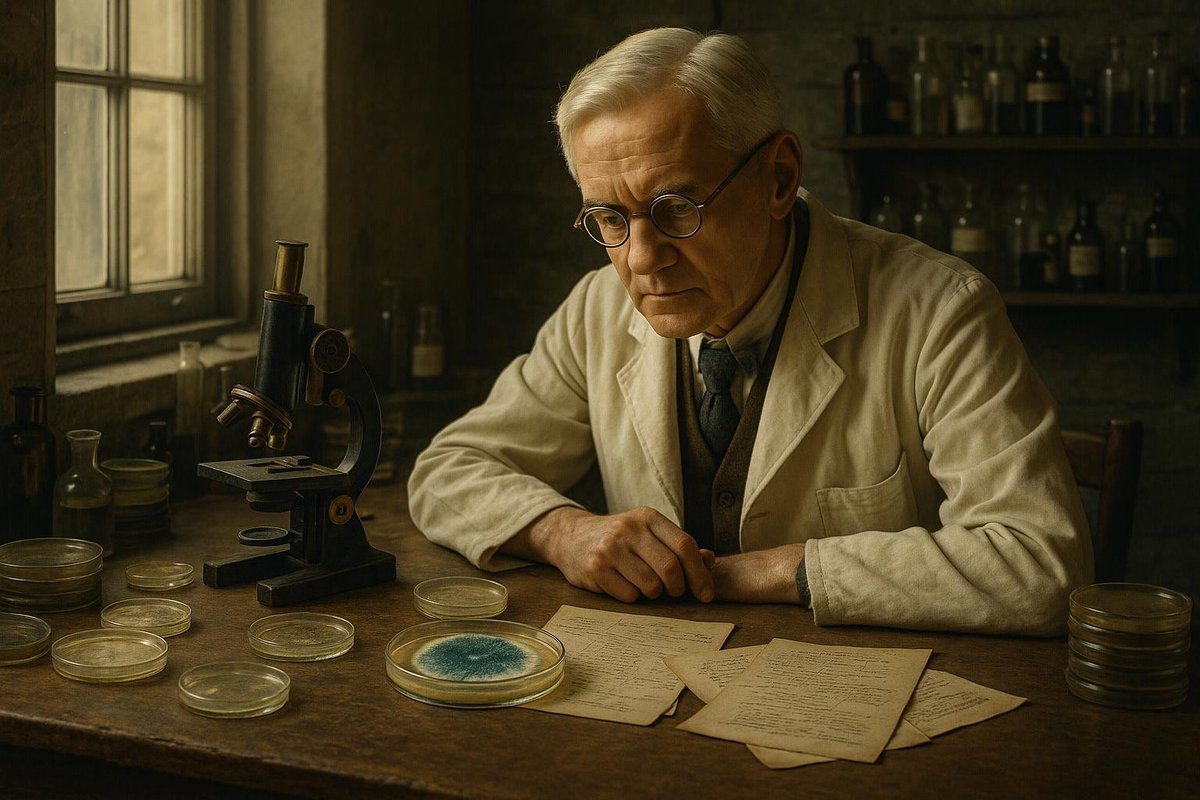
Origin: A Simple Mold with a Powerful Secret
In a cluttered laboratory in St. Mary’s Hospital, London, a seemingly innocuous oversight led to one of the most pivotal moments in medical history. It was 1928, and Alexander Fleming had returned from vacation to find a moldy petri dish. Surprisingly, this mundane occurrence sparked a revolution. But how could something as trivial as mold change the world? As many people might ask, the secret lay in the mold’s ability to repel bacteria, a revelation that would change the face of medicine.
- Fleming noticed a clear area devoid of bacteria around the mold.
- This observation contradicted the prevailing understanding of bacterial growth.
- His curiosity led to the identification of the mold as Penicillium notatum.
Interestingly, it wasn’t just luck that brought about this discovery. The laboratory conditions and Fleming’s keen eye played critical roles. Of course, curiosity and a willingness to question the status quo were equally essential. This accidental discovery soon began to take on a more methodical form as Fleming pursued the implications of his find.
Key Figures: The Scientist Behind the Mold
Alexander Fleming was not working in isolation. His serendipitous discovery didn’t remain a solitary act of genius, but one that required methodical validation and collaboration. Fleming was known for his meticulous approach to experiments, a trait that served him well when faced with this unexpected finding. But who was this man who turned a simple accident into a revolution?
- Fleming’s background in bacteriology prepared him for this moment.
- His previous work on lysozyme laid the groundwork for understanding antibacterial substances.
- He shared his findings with colleagues who would later expand on his work.
As time goes on, many people believe that science is a solitary endeavor, yet Fleming’s story highlights the importance of collaboration. His open approach to sharing his work allowed others, like Howard Florey and Ernst Boris Chain, to develop penicillin further, turning Fleming’s initial observation into a viable medical treatment.
Turning Point: Transforming Observation into Action
What truly set Fleming’s discovery apart was not the mold itself, but the step from observation to action. The leap from theory to practice required determination and rigorous experimentation. But how did Fleming ensure that his discovery would withstand the scrutiny of the scientific community?
- Fleming successfully isolated the active substance he named ‘penicillin.’
- He demonstrated its efficacy in killing a range of bacteria.
- Initial trials on animals and then humans showed promising results.
Fleming’s experiments were methodical and carefully documented, providing a solid foundation for further research. No wonder penicillin became a household name. His work paved the way for antibiotics as we know them today, highlighting the critical interplay between observation and methodical validation in scientific breakthroughs.
Impact on the World: Medicine Transformed
The ripple effects of penicillin’s discovery quickly spread beyond the laboratory. It was not long before this humble mold changed the landscape of medicine forever. But what exactly was the impact of this breakthrough on a global scale?
- Penicillin drastically reduced the number of deaths from bacterial infections.
- It played a crucial role during World War II by saving countless soldiers’ lives.
- The development of antibiotics ushered in a new era of medical treatment.
Of course, the cultural and historical context of the time amplified penicillin’s significance. Society was grasping for effective treatments for infectious diseases, and this discovery provided a beacon of hope. As a result, penicillin laid the groundwork for modern pharmaceuticals and is considered a cornerstone of contemporary medicine.
Fuel Someone Else’s Curiosity: Do you feel inspired by this tale of accidental brilliance? Share your thoughts or this article with someone else who might marvel at the wonders of scientific discovery. After all, curiosity is best when it’s contagious!

Leave a Reply